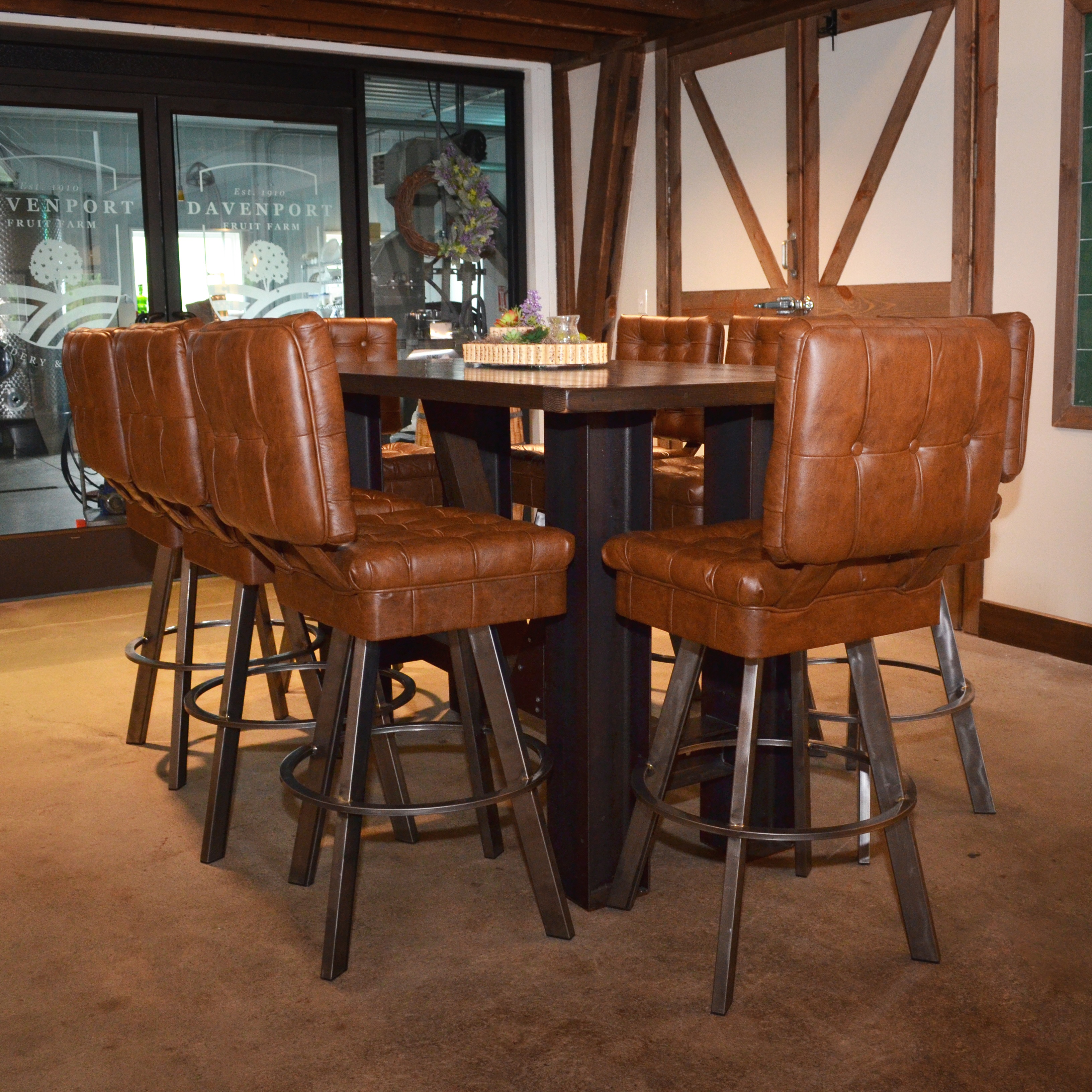When looking at purchasing restaurant chairs, weight limit might not be the first qualification that comes to your mind but that doesn’t mean it isn’t important. Your customers will also appreciate your research as they will be the ones using the chairs.
Technically, commercial furniture manufacturers can advertise whatever weight limit they want. As a consumer, you have to be careful not to be taken in by large weight limits that don’t really mean what you think. For example, there are chairs on the market that have a weight limit of 1,000 pounds, but they are tested using “static” weight, which means a load that is placed onto the chair and does not move. Think of gently placing 100 pound bags of concrete on the chair one by one until the chair fails. If the chair fails after 100-pound then the manufacturer can say that the chair is weight rated up to 1000 pounds.
In a real life, weight is not static. When is the last time that you saw a customer gently sit on a chair and not move? It just doesn’t happen. Customers adjust, reposition, rock back on the legs of the chair, and worse; in other words, their weight is constantly moving or dynamic. A chair that will support a 1,000 pound static load will only support a much lower dynamic load: probably even less than half as much.
So, what is the weight limit of most commercial furniture? The short and sweet answer to this question is that the industry standard for most commercial chairs is 250 pounds. That doesn’t mean that is the highest weight that they can support, but it is what they are tested for.
One standardized way of testing a commercial chair is to get it tested by the Business and Institutional Furniture Manufacturer’s Association, known as BIFMA. BIFMA creates the industry standards for commercial furniture. They offer a series of standard tests to rate the weight of a chair. Most BIFMA tests are designed to measure dynamic weight. For example, the seating impact test consists of dropping a 125 pound weight onto the seat from a height of 2 inches for 100,000 cycles. The chair must maintain its integrity and serviceability throughout the test in order to pass.
The series of BIFMA tests are meant to mimic a weight load of around 250 pounds, which is why that has become the industry standard. Most manufacturer’s choose to go with the 250 pound weight limit whether they have actually had their chairs tested according to BIFMA standards or not. Chairs that have been BIFMA tested could have the potential to hold more than the 250 pounds; BIFMA explains this further in their memo on chair weight limits and load ratings. They actually recommend not purchasing strictly based upon load-rating claims as they are not indicative of the life or strength of the chair.
You likely have patrons of all shapes and sizes, so it is important to find chairs that can support them. Next time you’re in the market for restaurant chairs, you’ll now know what the weight rating is, and how manufacturers arrive at that number.







